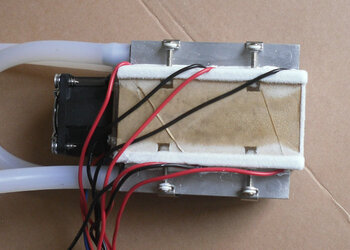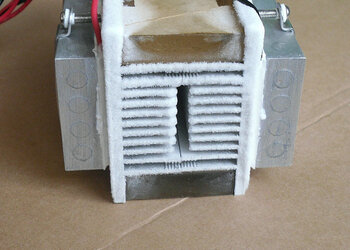Just posting brand new fresh thread pertaining to usage of Peltier in water cooled PC system.
I am building WC system where Peltier is used not as a complete heat exchange module but a heat transporter device that transports heat from the running loop. The PT cooled systems I saw are terribly designed - they put whole delta heat load on the PT which is from the beginning an insulator between CPU and dissipator in such loop. I studied termodynamics btw
I described it on some other forums. Anyways, Peltiers are so cheap it is just worth implementing them into pc water coolers.
Also such system needs at least one advanced thermostat with temp. range control - about $2 in China )
I'll post when I finish building that cooler
I am building WC system where Peltier is used not as a complete heat exchange module but a heat transporter device that transports heat from the running loop. The PT cooled systems I saw are terribly designed - they put whole delta heat load on the PT which is from the beginning an insulator between CPU and dissipator in such loop. I studied termodynamics btw
I described it on some other forums. Anyways, Peltiers are so cheap it is just worth implementing them into pc water coolers.
Also such system needs at least one advanced thermostat with temp. range control - about $2 in China )
I'll post when I finish building that cooler



